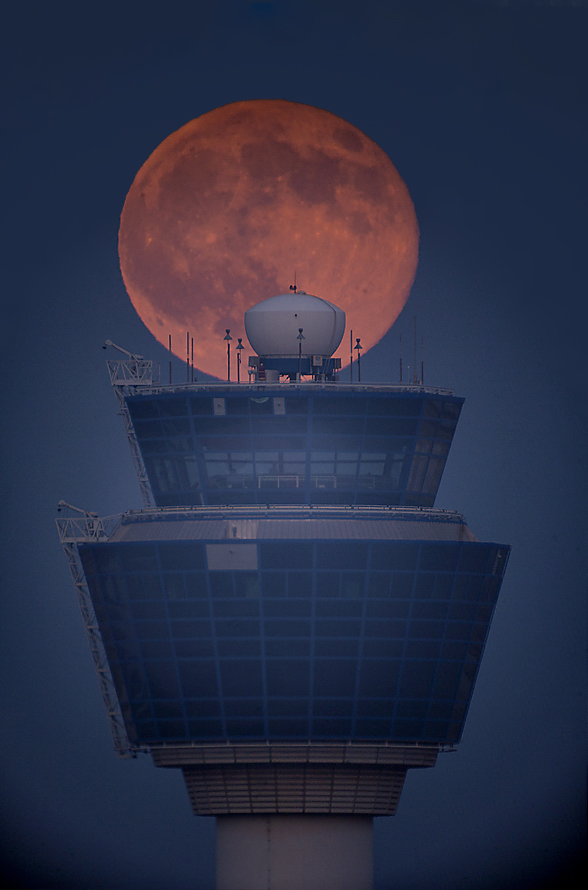
Our closest celestial neighbour has kept us company for at least four billion years and has entertained our imagination in a variety of
ways. It certainly has been involved in our maturation as a species with man's first step on a body beyond our planet during the latter
part of the twentienth century and will, inevitably, be our first stop prior to any sort of manned travel to a further celestial body
such as Mars. The moon has been a great source of education about our own planet's evolutionary history; it has entertained many
inquisitive minds from earlier cultures and generations about the universe in general and man's role in particular; it has enriched the
minds of young children taking their first look through a telescope and continues to impact our lives in ways we may or may not readily
recognize including tidal forces and various natural rhythms and cycles.
Note: The image below is a follow-up to other similar efforts involving the rising (full) moon near dusk and
against well-known landmarks in Greece including archaeological grounds (see
here). Such an exercise requires careful planning and execution
so that the azimuth and altitude of the rising moon match precisely with the foreground landmark of interest. Also important is the time during
late afternoon that such an attempt is executed, for one requires balanced lighting between the foreground landmark and the bright rising
(full) moon. Once all of these factors are available simultaneously with respect to lighting balance (full moon and landmark foreground) as
well as azimuth and altitude, a result such as the one below involving the air traffic control tower at Eleftherios Venizelos International
Airport in Athens, Greece is realized.
Named after one of the most prominent prime ministers of Greece, the Eleftherios Venizelos International Airport opened for operation in March
2001 and represents one of the leading airports in Greece. It is characterized with two parallel runaways (3800 and 4000 meters in length) for
simultaneous take-off and landing which can accommodate the biggest aircraft in the world. Current annual traffic involves 15 million passengers
with a physical capacity of 21 million passengers using the current facilities (Phase Six expansion plans are for 50 million passengers per
year). Lying about 20 km to the east of Athens, the airport has a physical surface area of 150,000 square meters across four levels with many
bridges and walkways. Built at a cost of 2.1 billion euros, the airport received the 2004 "European Airport of the Year" whereas in 2005 and 2006
it was awarded the Skytrax award for best airport in Southern Europe. In the image below, a portion of the 70-meter tall air traffic control tower
is visible including the 12-meter wide staff sections. The photo was taken from a distance of about 2250 meters to the northwest of the control
tower so as to be properly aligned with the rising full moon immediately behind it.
Note: For additional photos of the rising moon from the same session as well as photos of the sun and/or full moon
against other well-known Greek archaeological grounds and sites, please click
here.
|
Body: Moon Mass: 0.0123 x Earth Mean Eq Diameter: 0.2719 x Earth Distance: 364,305 km Sidereal Rev: 27d 07h 43m 11s Age: 15d 02h 12m Phase: 99.8° Diameter: 32.84' Magnitude: -12.6 Rukl: N/A |
 |
Date: July 31, 2015 Location: Spata, Athens, Greece Equipment: Takahashi FSQ 106/f5 Canon EOS 5D Mark I AP 2x Conv Barlow Exposure: 1/20 sec ISO 200 RAW Image Format 4368x2912 image size Manual Mode Servo Mode Software: Digital Photo Pro V2.1.1.4 Photoshop CS5 Processing: Resampling JPG Compression |